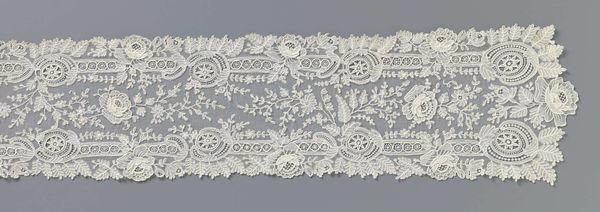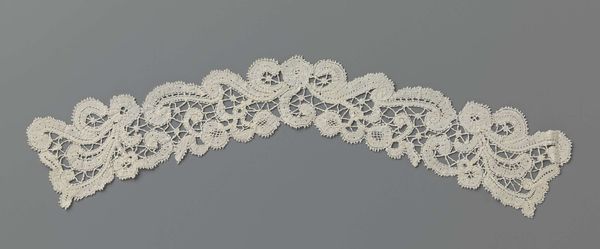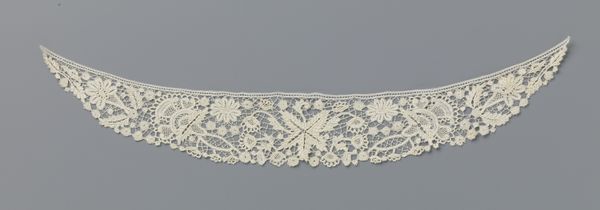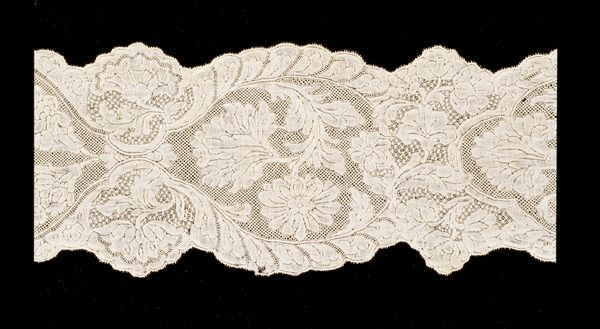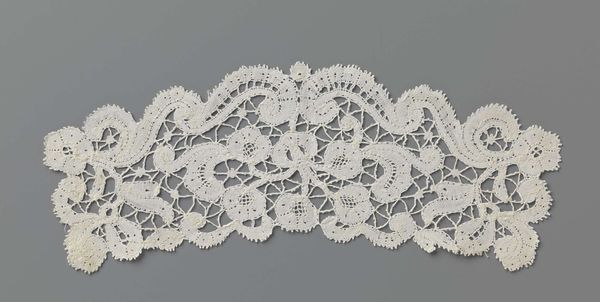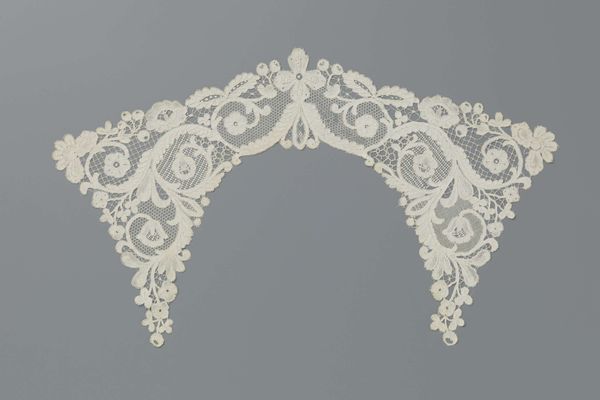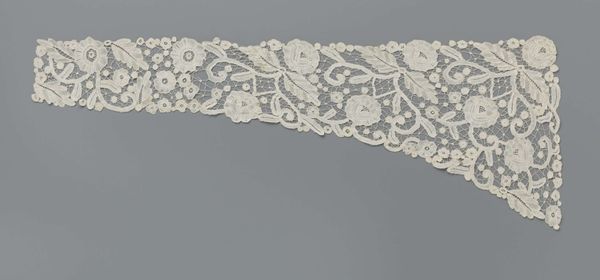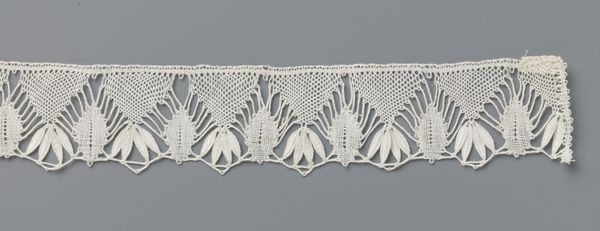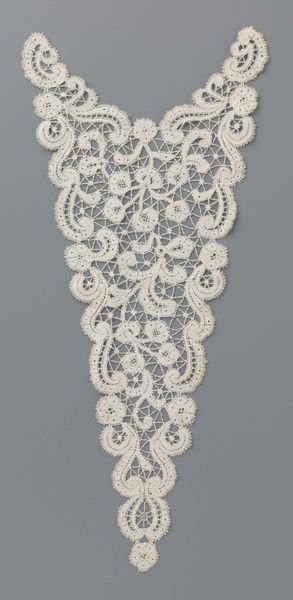
weaving, textile
#
natural stone pattern
#
organic
#
arts-&-crafts-movement
#
weaving
#
textile
#
pattern design
#
repetitive shape and pattern
#
organic pattern
#
repetition of pattern
#
intricate pattern
#
regular pattern
#
pattern repetition
#
decorative-art
#
layered pattern
#
combined pattern
Dimensions: length 650 cm, width 14 cm
Copyright: Rijks Museum: Open Domain
Curator: Here we have "Strook gemengde kant met s-voluten," a mixed lace piece with s-scrolls, created around 1895 by Maison Sacré. It presents an exquisite example of late 19th-century decorative art. Editor: My first thought is delicacy. The intricacy is just stunning, it seems incredibly fragile and ethereal. Curator: Absolutely, and that delicacy is intertwined with power dynamics. Lace-making, often a female-dominated sphere, became crucial to livelihoods but also a site of exploitation. This piece likely reflects the era’s tensions between artistry, labor, and consumer culture. We need to remember who was making these pieces. Editor: Right. The handcraft here speaks volumes about skill and, frankly, time. Someone poured hours, days perhaps, into its creation. That's labor made beautiful. The very method of its making resists quick mass-production. It demands careful focus. The labor! We must understand who crafted it and what they earned doing so. Curator: Its creation ties directly into the Arts and Crafts movement—a rejection of industrialization's dehumanizing aspects. Examining these floral motifs closely, they mimic nature, yet they are controlled, crafted by hand and intention, but this contrasts greatly with the labour. This speaks to broader tensions: industrial growth versus artisanal tradition, mechanisation against human skill, male factory owners versus marginalized women artisans. Editor: I am more concerned with the material aspects. I notice it presents repetitive S-curves that anchor floral clusters; it gives a flowing but firmly patterned design. Can we be sure that we acknowledge this blend of art and artisanship. Curator: Yes, exactly. And how lace was understood culturally also shaped its meaning. Think about who was consuming it. It adorns the wealthy, representing luxury, purity—yet its existence relied on exploitation and suppressed voices. How does lace symbolize gender roles, power, and the hidden costs of beauty? We must also ask, does this challenge the societal norms, or perpetuate the divide? Editor: A fitting point to end, how something as delicate as this speaks of far larger things than the eye would imagine. Curator: Yes, exactly. From the labour woven within, to its statement of its time.
Comments
No comments
Be the first to comment and join the conversation on the ultimate creative platform.
